Cucumber Wrapped Sushi Roll
This CUCUMBER WRAPPED SUSHI ROLL is like the love child between a Japanese maki and a smoked salmon tea sandwich! The cucumber exterior has a refreshing crispness that perfectly counters the interior of vinegared rice, smoked salmon, creamy avocado and cream cheese. They are delicious little bites perfect for brunch, as an appetizer or a fun minimal-cook meal.
This CUCUMBER WRAPPER SUSHI ROLL would not be considered authentic Japanese sushi roll (makizushi or rolled sushi) and I’m pretty sure you wouldn’t find it in Japan. I guess there is the similarity of rolling up sushi rice and other fillings often found in (Westernized) sushi rolls and cutting into bite-sized pieces. Perhaps we can liken them to the California roll or Dragon roll, the super popular western inventions of rolled sushi. Because this CUCUMBER WRAPPED SUSHI ROLL is made with smoked salmon, they are perfect for pregnant women, young children or general population of people who don’t eat raw fish. Authentic or not, I think they’re a wonderfully imaginative and delicious creation.
I’ve seen versions of this made with hollowed-out cucumber but I prefer this version using thinly sliced cucumbers to create a “sheet” as the stand-in for nori (dried seaweed sheet). A vegetable y-peeler would be your best tool for getting thin and long cucumber slices for this. I say this all the time: a y-peeler is one of my top 5 kitchen tools to have. I don’t like to tell people to buy things they don’t need, but a y-peeler is truly an inexpensive workhorse in my kitchen and should be in yours if it isn’t already!
Eat well and be well,
Sonia
🎥 watch video for Cucumber Wrapped Sushi Roll:
how to assemble Cucumber Wrapped Sushi Roll:
Recipe notes for Cucumber Wrapped Sushi Roll
1.what kind of cucumber should I use?
any variety of “seedless” cucumber works. English cucumbers and Persian cucumbers are widely accessible here. With English cucumbers, they still have a small channel of seeds running through the core which means you get to a certain point when you can no longer get full width slices. You can still use the small strips on either side, or just cut the centre for snacking rather than using in the recipe. With Persian cucumbers, there is almost no seed to speak of so you can get full width slices all the way through. That said, Persian cucumbers are much smaller in size so your rolls will be smaller as well and you’ll need to roll more to equal the recipe.
2.what’s the best way to cut the long, thin cucumber slices?
A vegetable y-peeler would be your best tool for getting thin and long cucumber slices for this.
3.what is mirin?
Mirin is Japanese fermented sweet rice wine. Similar to sake, mirin is also a rice wine but with higher sugar and less alcohol. The real deal mirin is made from sweet rice and rice koji. That’s what you should look for in the ingredients list, along with water and sea salt. Avoid the cheap version containing glucose syrup and/or corn syrup. You can find mirin in Japanese and other East Asian grocery stores, online (ie. Amazon) and in the International aisle of well-stocked grocery stores. Even if you don’t frequent asian stores, Eden Foods (an American company) makes an organic mirin which is available in Canada and the U.S.
4.I don’t have mirin. can it be omitted from the sushi rice?
Yes, the mirin can be omitted from the sushi seasoning. While I do love the mirin for added depth of flavour, it is not always present in sushi rice. The vinegar, sugar and salt will give the rice a balanced flavour without the mirin so don’t go out of your way to get it for this recipe.
5.what is furikake?
A Japanese sesame and seaweed seasoning made with toasted white / black sesame seeds, sugar, salt, dried seaweed and sometimes other ingredients such as dried bonito. It is used as a finishing seasoning on rice, noodles, fish, vegetables and really anything you wish to add a bit of texture and flavour to! Furikake is easily purchased at any East Asian grocery stores.
6.can the rice be made in advance?
You can cook plain rice and keep it hot to prevent bacteria growth. At room temperature, cooked rice can be safe for up to 2 hours (source). The vinegar in the seasoning mixture reduces the pH and actually helps prolong the length of time it is safe (acidified rice with ph < 4.6 inhibits growth of pathogenic bacteria - source). But since we typically are not testing ph in home kitchens, I suggest playing it safe and keeping under (or close to) the 2-hour guideline even for vinegared sushi rice. Keep the cooked rice hot, then cool slightly just before assembling the rolls.
7.how long can cucumber wrapped sushi rolls be left out at room temperature?
If you plan to keep the finished CUCUMBER SUSHI ROLLS on the counter (e.g. to serve at a party), I suggest including that period of time as part of the 2-hour window (see note above under “can the sushi rice be made in advance?”).
You may also be interested in these other recipes!
Spaghetti Napolitan (aka Japanese ketchup pasta)

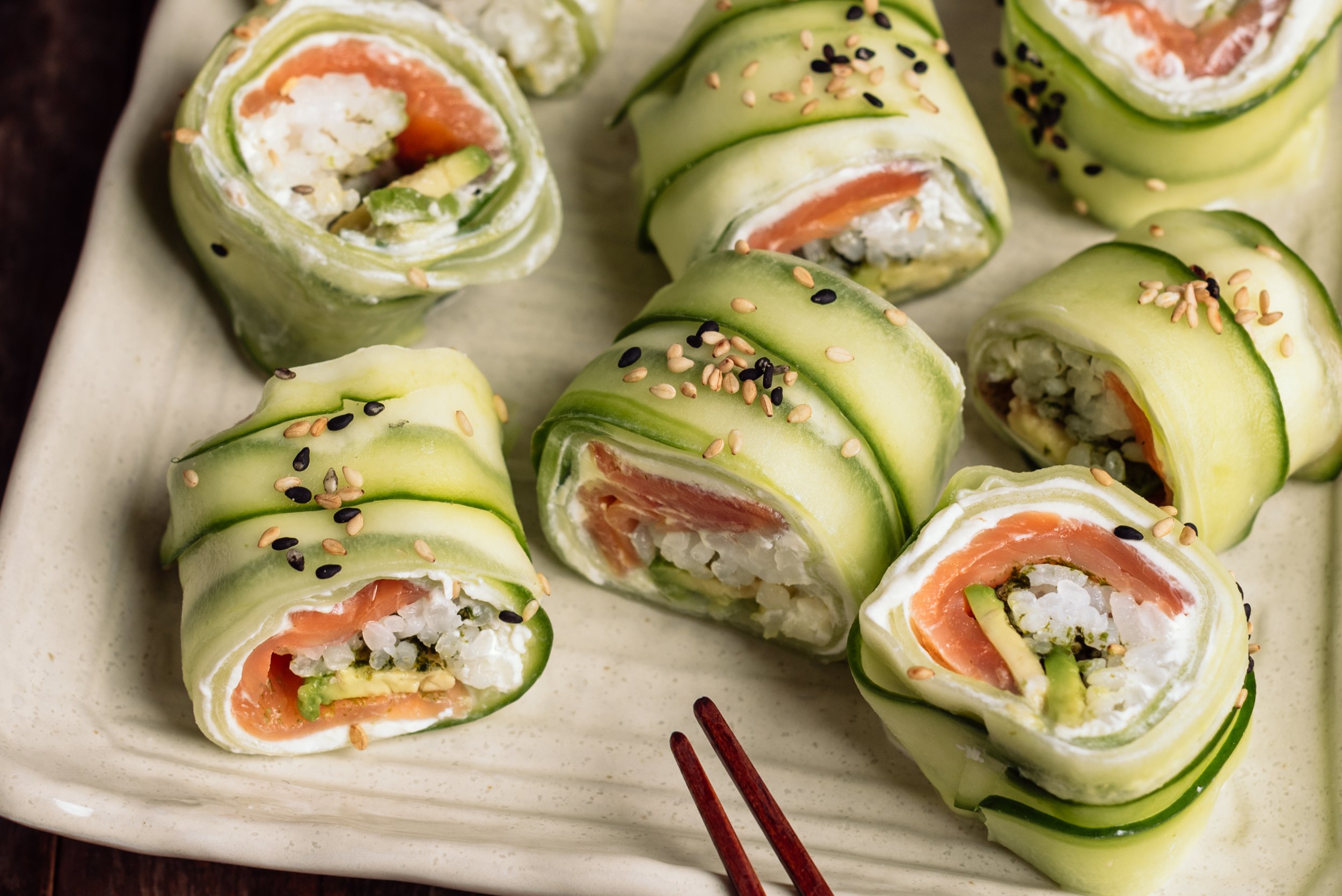
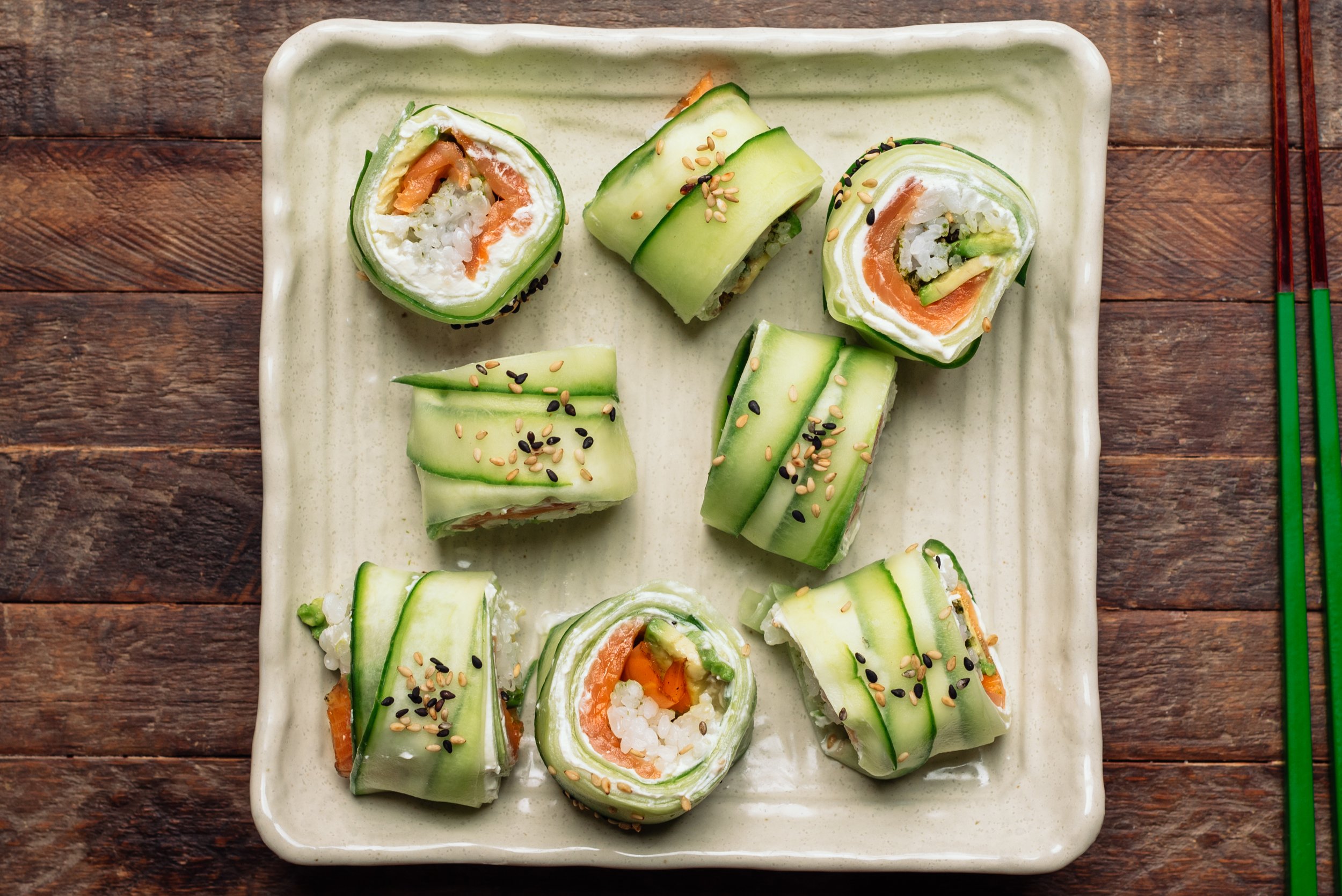


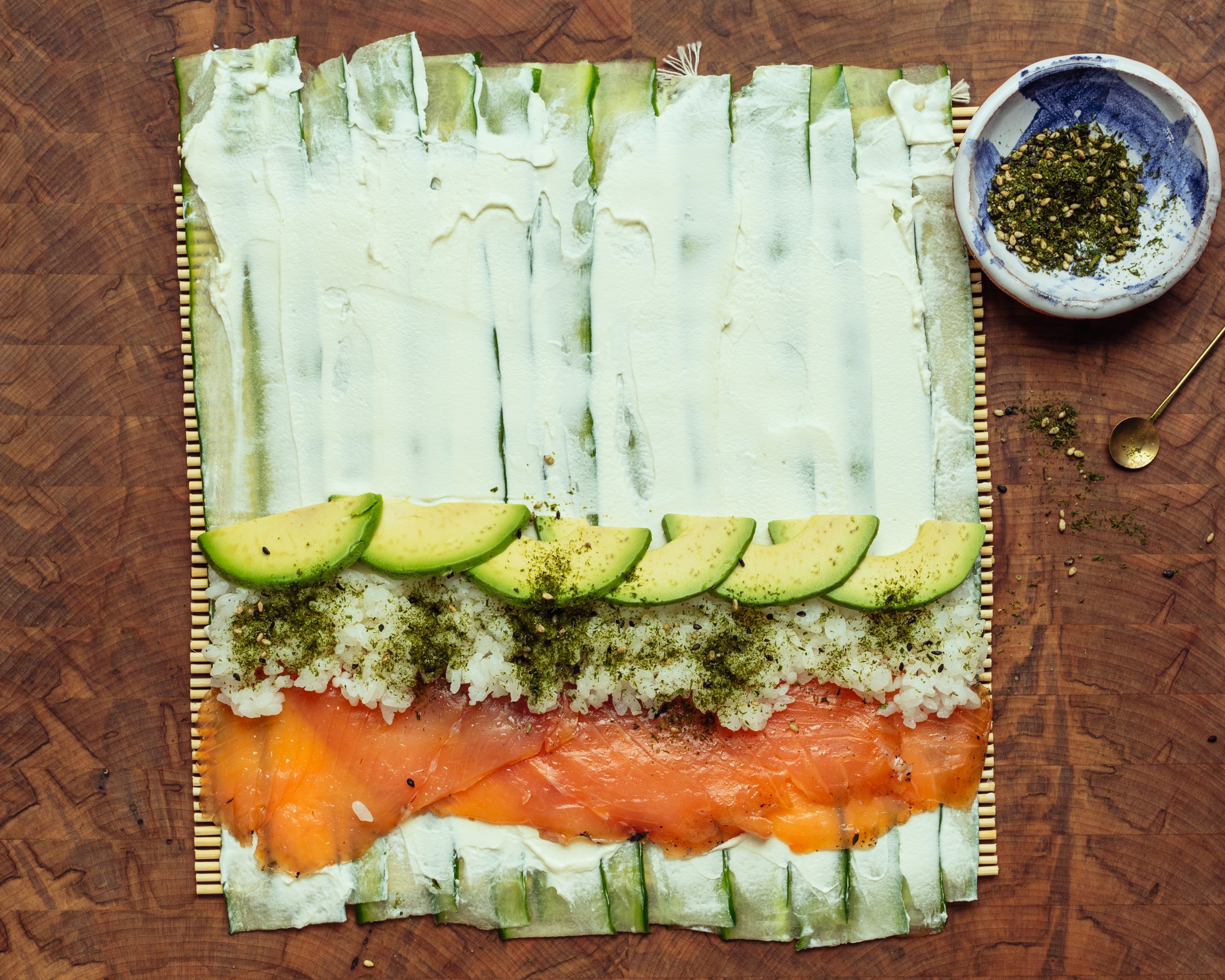
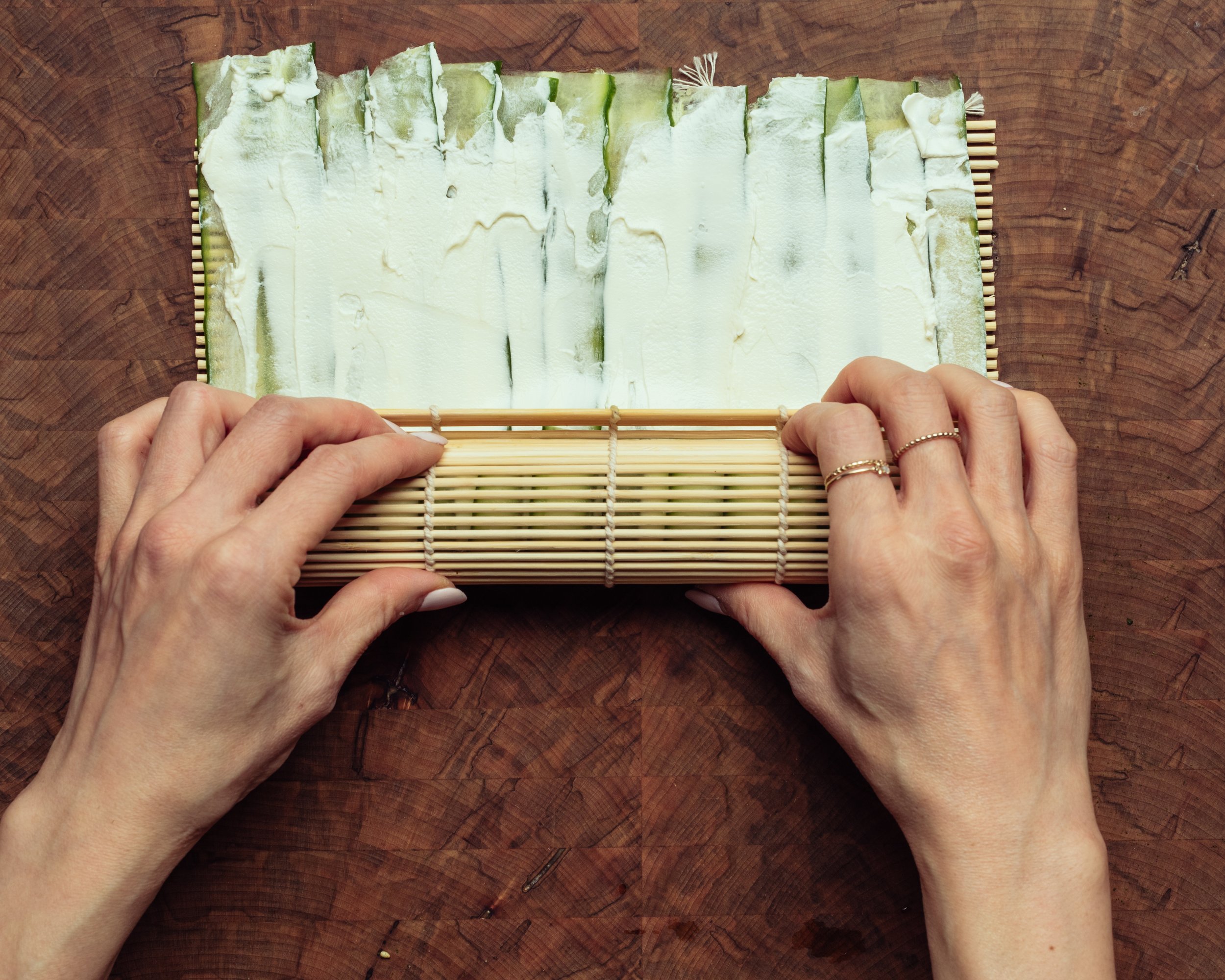




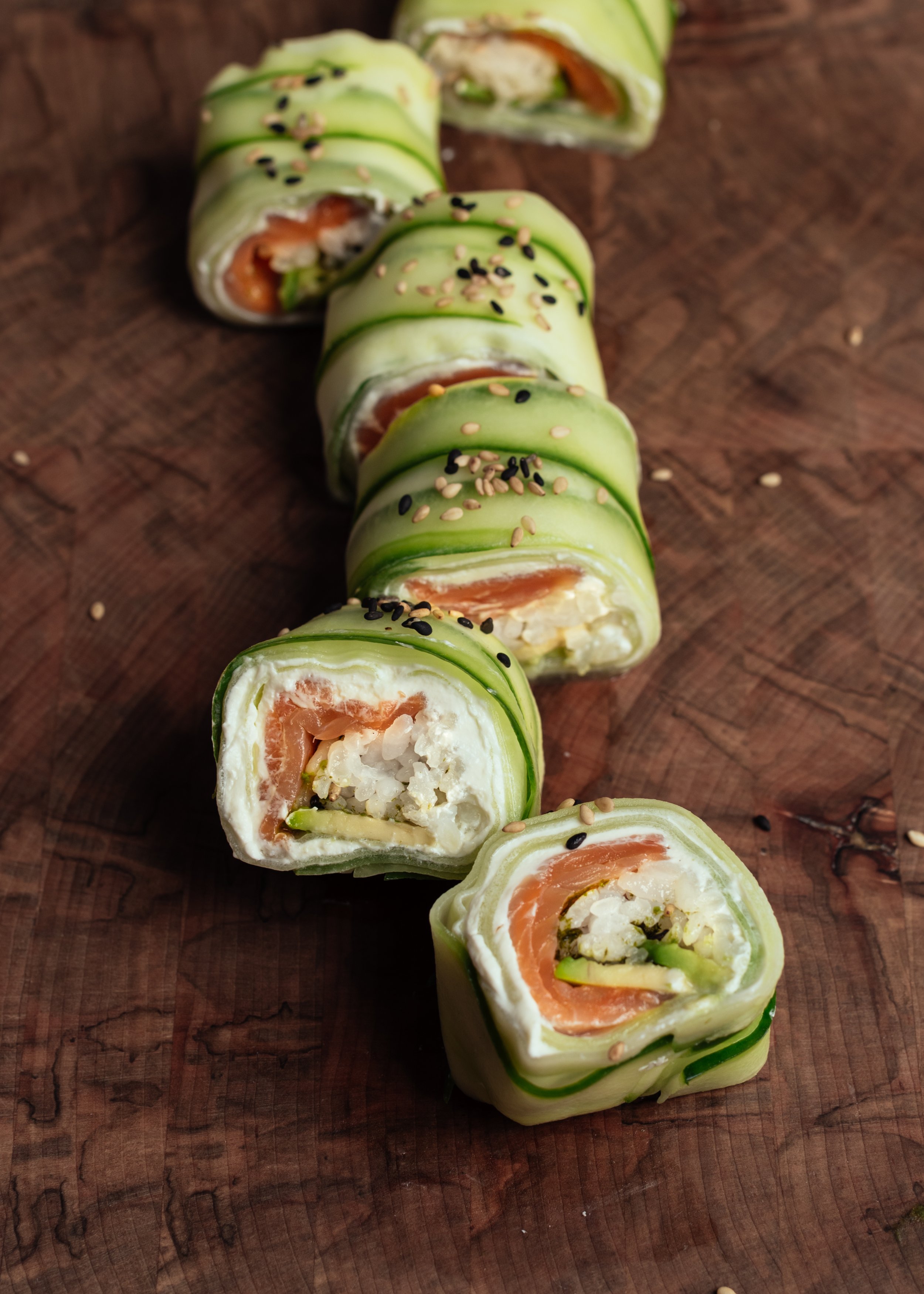






Hi, I’m Sonia
I share recipes inspired by my food cravings and what I make for my family. My role as a working mom of two girls, my life in Toronto Canada and my background as a Chinese immigrant from Hong Kong all inform the things I love, crave and create. This means an emphasis on wholesome recipes that are approachable for busy weeknights and fun recipes to make on weekends and for friends!
homemade food to nourish and indulge …
More about Sonia >